Co. Dublin SKERRIES
Red Bank House
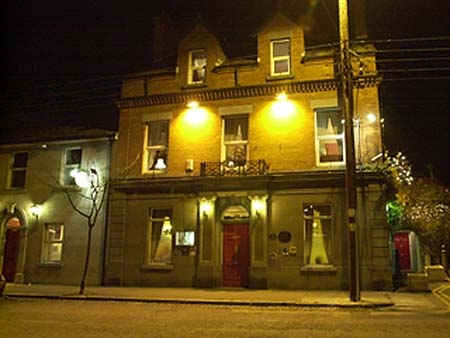
Stoop Your Head
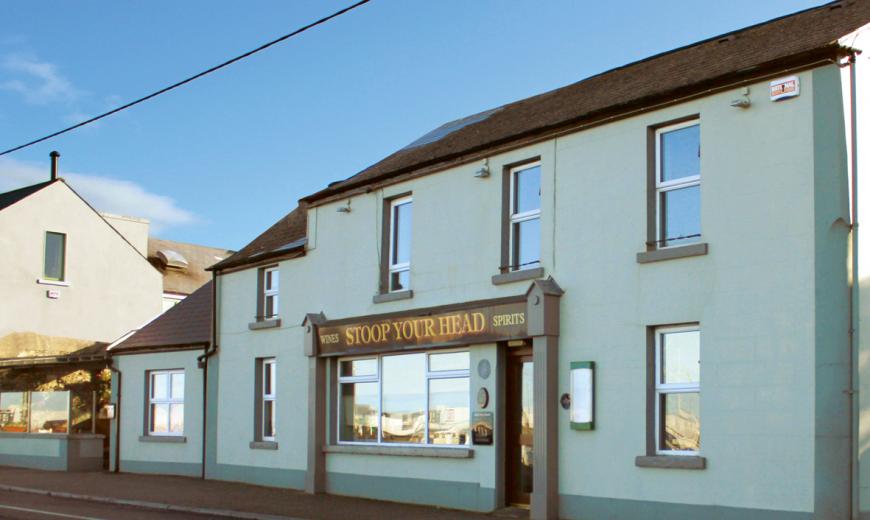
AA SKERRIES
Olive Deli & Café
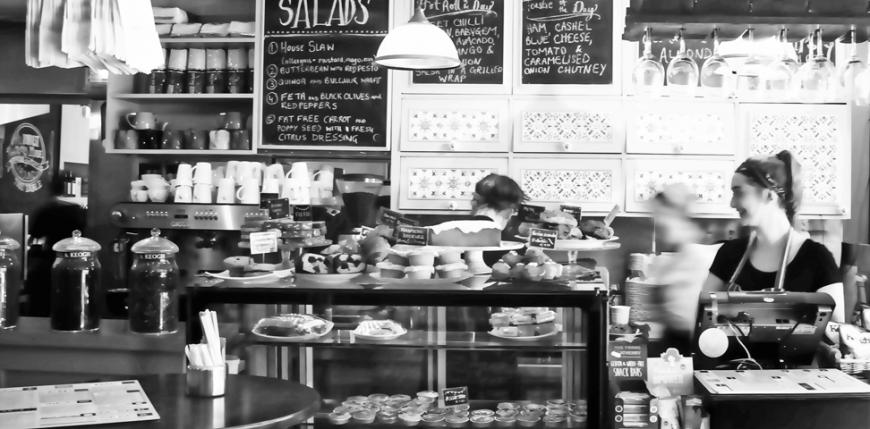
Red Bank House & Restaurant
Located just 25 mins on the new M1 from the airport (compared to almost 45- 1 hr from southside Dublin) Terry McCoy’s renowned restaurant in the characterful fishing port of Skerries is in a converted banking premises, which adds to the atmosphere - even the old vault has its uses, as a wine cellar.
There are several churches to choose from in the area, and wedding blessings are also possible here - and a piper or other special welcome can be arranged for arriving guests if you choose.
The reception is held in the restaurant and, although the decor in general is the couple’s responsibility, there are flowers and candles provided on tables. Skerries is especially famous for Dublin Bay Prawns (langoustines) and Terry is an avid supporter of local produce, with fresh seafood from Skerries harbour providing the backbone of menus that are a joy to read; his dishes tend to have names of local relevance - grilled goat’s cheese St. Patrick, for example, is a reminder that the saint once lived on Church Island off Skerries - and vegetarian dishes or plainly cooked food is available on request.
The classic dessert trolley is legendary, so this is not perhaps the place to consider having the wedding cake at an early stage of the evening.
This wedding venues accommodation is offered adjacent to the restaurant in fine, comfortably furnished guest rooms that have all the amenities normally expected of an hotel, making a great base for guests who are able to stay on for a few days in the area - allow time to visit Skerries Mills (working windmills) and the beautifully located Ardgillan Castle and Victorian Gardens nearby, where there are tea rooms.
Ardgillan Castle & Demesne
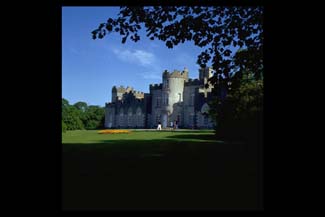
Corrupted from the Irish Ard Choill (high wood), Ardgillan was aptly named until the Rev Robert Tayleur paid labourers a penny a day to clear the land for his new home in 1737. The estate, with its Gothicised house situated in a 200 acre park above Barnageera Beach and views stretching to the Mournes, is now owned by Fingal Council and is open to the public.
The garden has the benefit of old bones combined with new ideas. The Council have restored the gardens near the house, adding a new rose garden planted with hybrid tea roses around a lily pond and climbing roses ingeniously grown over a pergola of chains. Manicured lawns, a herbaceous border, the beautifully restored glass house with peaches, nectarines and grapes all provide a traditional note. A national collection of potentillas with over 300 varieties has been planted in this area.
The reinterpreted walled garden is full of interest: there is a potager where unusual vegetables like garden huckleberries and physalis are contained by hedges of clipped box; a herb garden has been laid out around a central lavender bed, and there is a neatly labelled herbaceous and shrub garden and Four Seasons garden (two seasons actually, as it is planted with tulips in spring and dahlias in summer).
The orchard area has fans of peaches and greengages and a collection of old Irish apple varieties dating as far back as Blood of the Vine (16th century) and Ballysattin (1820). The potting shed and bothy now house a gardening museum full of bygone horticultural technology, and new scree beds with Alpine displays have been created nearby.
Walks in the grounds are recommended, offering the opportunity to discover the ice house and the quaintly names ‘Lady’s Stairs’ leading to the beach.
Balbriggan & Skerries
Balbriggan and Skerries are boat angling venues where small boats can be launched to fish around Lambay Island (3 miles to the south east) and over Rockabill grounds. The best method is anchoring over sand and mixed ground which will produce spurdog, ray, conger, dogfish, dab, codling, whiting and occasional tope. Drifting over the reefs will produce pollack, coalfish, wrasse and occasional ling. Balbriggan and Skerries are also good shore angling locations. Float fishing at Balbriggan and Skerries can produce mullet and at Balbriggan from the pier over sand at high water there is fishing for mackerel (in season) and flatfish. Bait can be collected at Skerries where west of the pier "king" ragworm and lugworm can be dug under the promenade at low tide.
Small boats can be launched at Balbriggan to fish the Cardy Rocks area and the grounds out to and around the Rockabill Lighthouse. Codling, dogfish, dab, spurdog, whiting, pollack and wrasse are the most common species. It should be noted that Balbriggan is a very busy commercial harbour and permission may be necessary to use the slipway. The harbour is also an excellent mullet fishing venue with fish up to 5lbs possible on float tackle.
Skerries is a popular small boat angling centre in summer with the Skerries Islands and Rockabill grounds easily reached. The species are similar to Balbriggan but a number of offshore wrecks have been receiving attention recently, and will surely turn up interesting results soon. The pier produces mackerel and specimen mullet for shore anglers, annually, while coalfish and codling turn up on night tides from the rocks to the east.
Species: Mackerel, whiting, codling, pollack, dab, spurdog, mullet, tope and ray
Season: May - October.
Ground Type: Mainly sand with reef and rock around Islands.
Bait: Mackerel, ragworm and lugworm
Method: Legering is by far the best method while fishing for predatory species. Feather or Hoi Koi type paternosters are effective over rough ground.
Fishing Tip: Use Pennel Tackle when fishing with king ragworm around Rockabill. The main hook should be 6/0 with the “head hook” about 4/0 in size.
© Eastern Regional Fisheries Board
Loughshinny & Rush
Loughshinny and Rush are boat angling venues where small boats can be launched to fish around Lambay Island (3 miles to the south east) and over Rockabill grounds. The best method is anchoring over sand and mixed ground which will produce spurdog, ray, conger, dogfish, dab, codling, whiting and occasional tope.
Loughshinny is also a good shore angling locations.
The slipways are tidal at both Loughshinny and Rush harbours, so if small boats have to be launched, then trips require careful planning to coincide with suitable tides. Fishing from these venues is concentrated mainly around Lambay Island, which lies some 3 miles to the south east of Rush harbour. Drifting over the reef and mixed ground will produce pollack, coalfish, wrasse and occasional ling.
On the north beach Rush there is good fishing for bass following an easterly blow.
Species: Mackerel, whiting, codling, pollack, dab, spurdog, mullet, tope and ray
Season: May-October.
Ground Type: Mainly sand with reef and rock around Islands.
Bait: Mackerel, ragworm and lugworm
Method: Legering is by far the best method while fishing for predatory species. Feather or Hoi Koi type paternosters are effective over rough ground.
Fishing Tip: Use Pennel Tackle when fishing with king ragworm around Rockabill. The main hook should be 6/0 with the “head hook” about 4/0 in size.
© Eastern Regional Fisheries Board
White Cottages, The
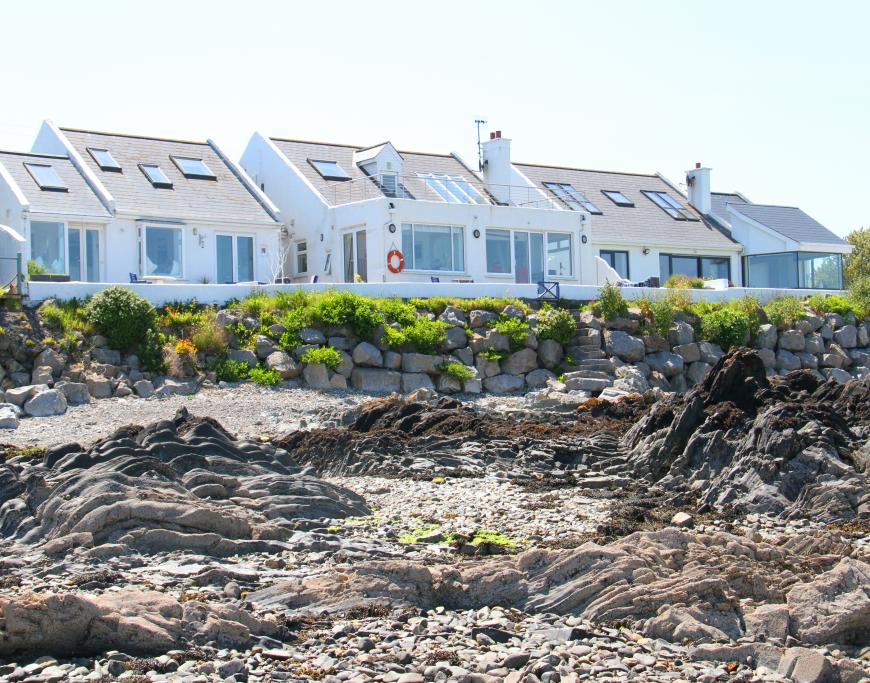
Egans Ocean Fresh
Skerries Mills
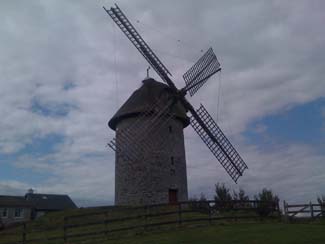 A collection of two windmills and a watermill with associated mill pond, mill races, wetlands. Step back in time with a guided tour and see the mill as they were in day gone by with many of the exhibits working. The story of stone-ground milling in Skerries can be traced to the early 16th century and continued until the early years of the 20th century and a bakery which existed by 1840, was producing breads and confectionery until the mid 1980’s.
A collection of two windmills and a watermill with associated mill pond, mill races, wetlands. Step back in time with a guided tour and see the mill as they were in day gone by with many of the exhibits working. The story of stone-ground milling in Skerries can be traced to the early 16th century and continued until the early years of the 20th century and a bakery which existed by 1840, was producing breads and confectionery until the mid 1980’s.
Blue Bar, The
Windmill Steakhouse, The
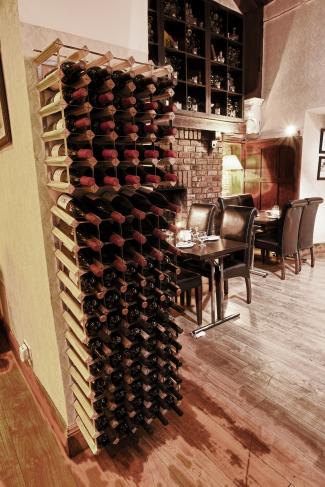
Potager
McNally Family Farm
Show me all Co. Dublin


